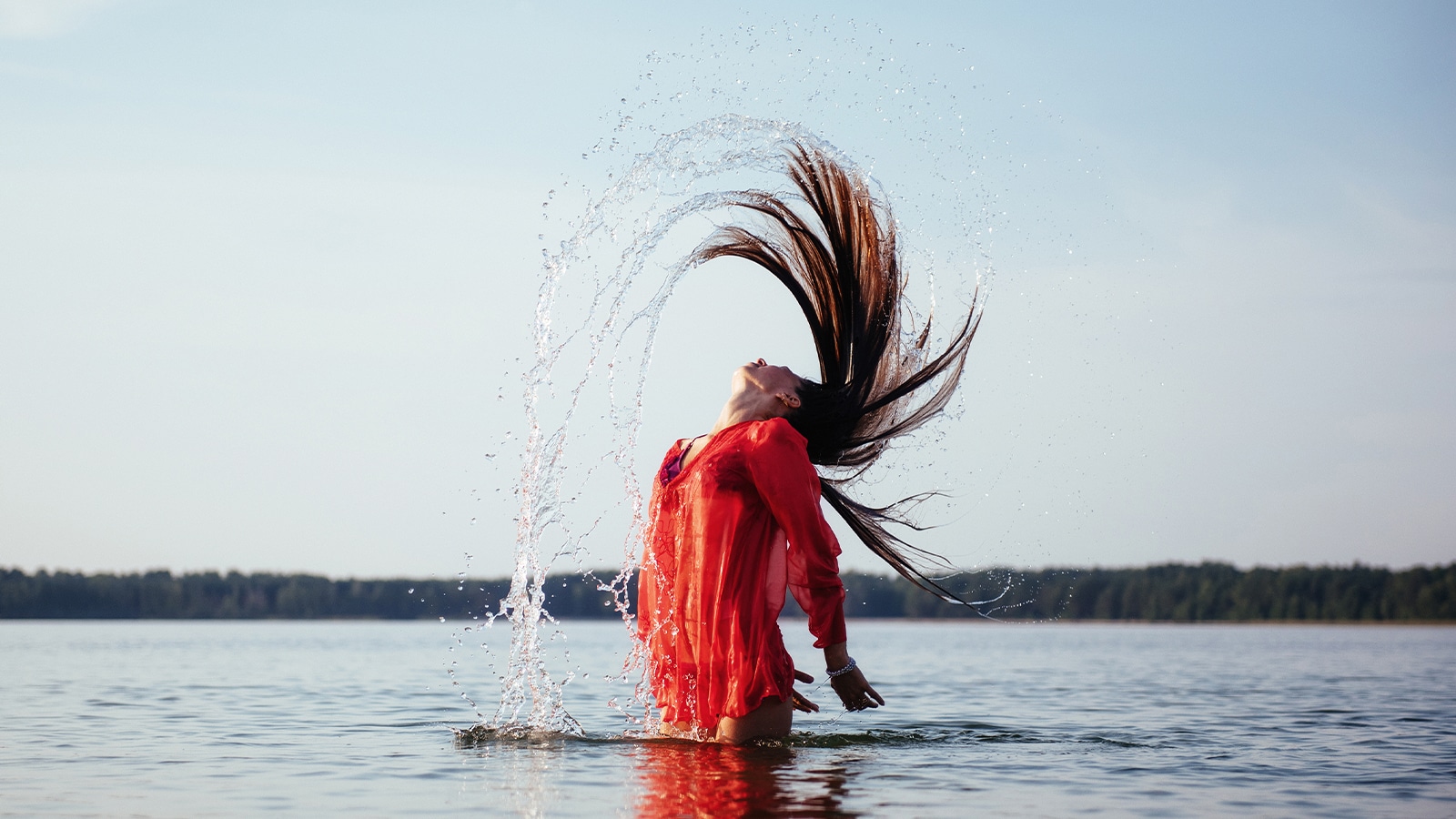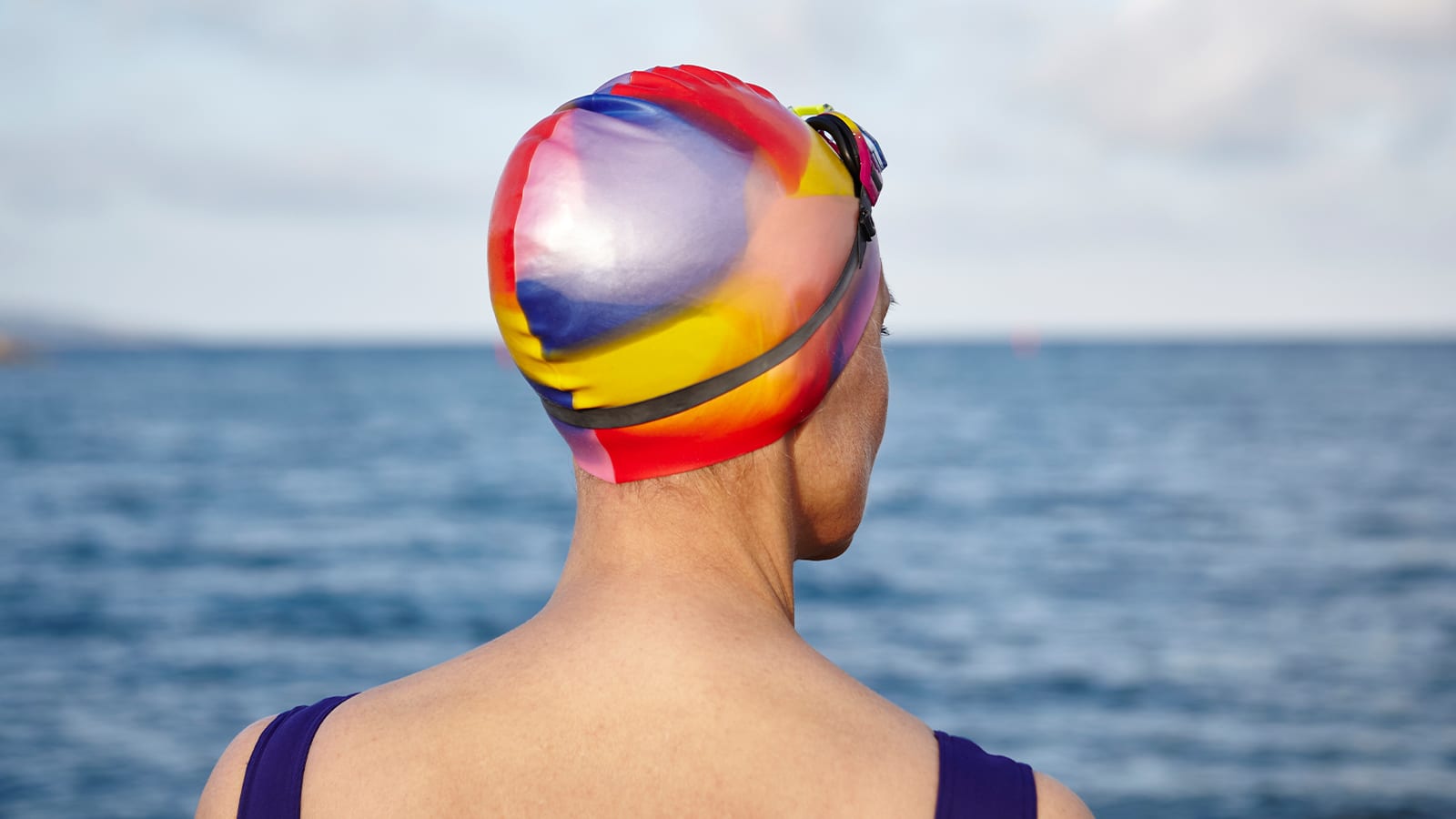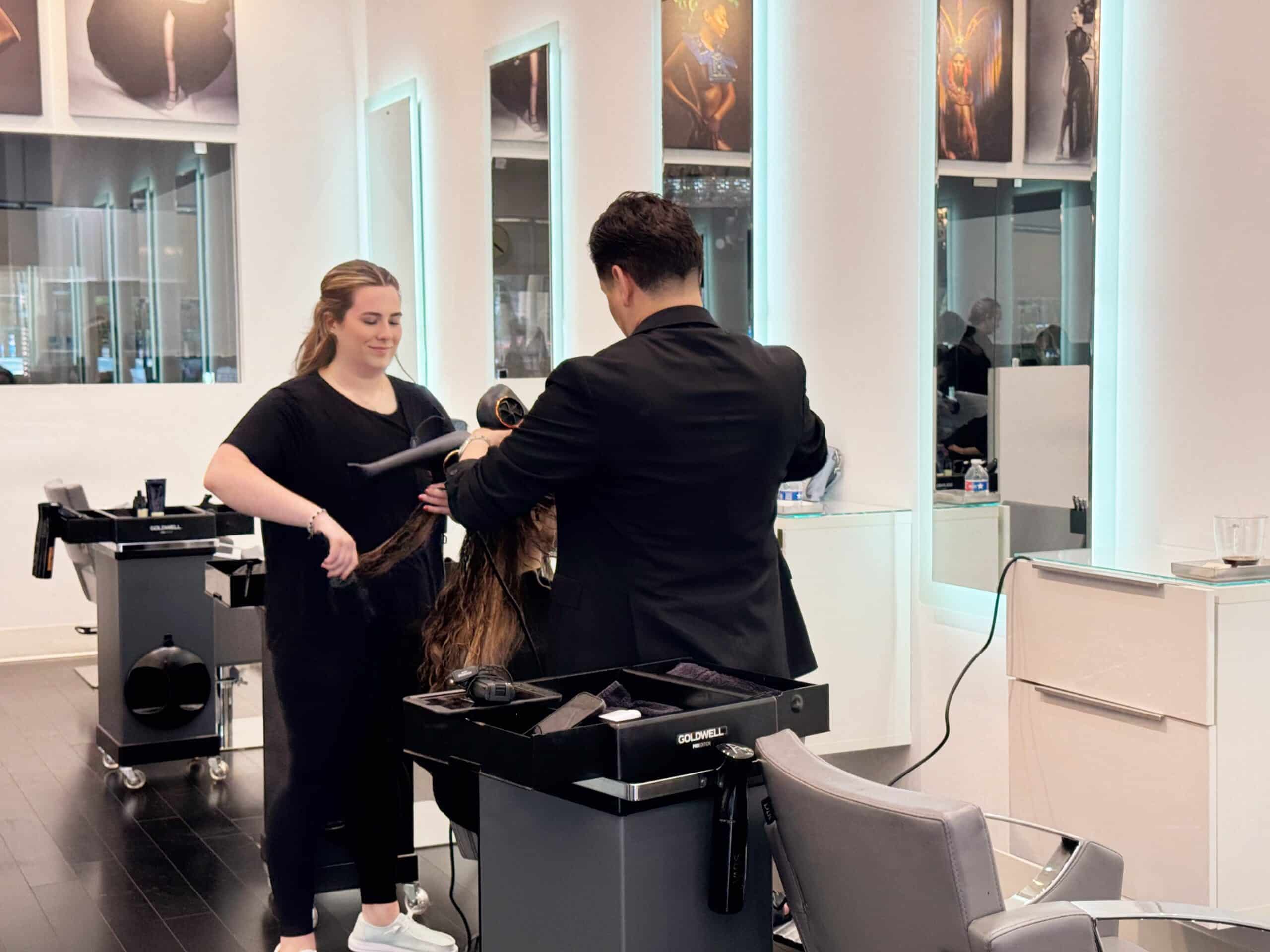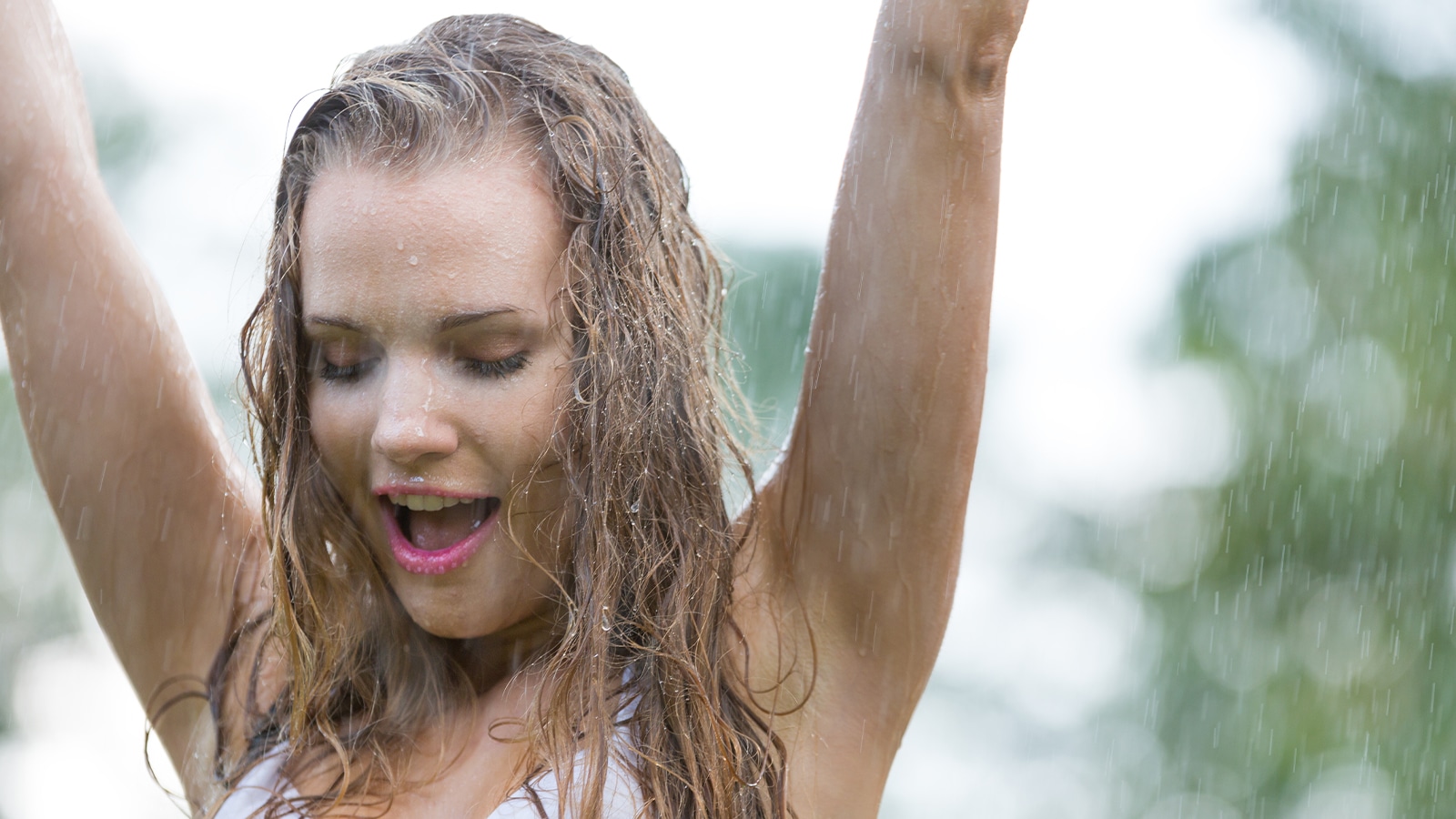 June 11, 2025 | Hair Color
June 11, 2025 | Hair Color Summer’s calling, the pool is sparkling, and your hair… well, it’s silently panicking. Whether you’re planning a tropical vacation, crushing laps at the local gym, or just trying to survive Houston’s heat, swimming is part of the summer lifestyle we all enjoy. But if you’ve got human hair extensions or color-treated hair, diving in without protection is like leaving your favorite silk blouse out in a thunderstorm — repeatedly.
Summer’s calling, the pool is sparkling, and your hair… well, it’s silently panicking. Whether you’re planning a tropical vacation, crushing laps at the local gym, or just trying to survive Houston’s heat, swimming is part of the summer lifestyle we all enjoy. But if you’ve got human hair extensions or color-treated hair, diving in without protection is like leaving your favorite silk blouse out in a thunderstorm — repeatedly.
At Trademark Salon, we love a good pool day as much as anyone. But we also love keeping your extensions looking fabulous, your hair healthy and vibrant, and your hair color rich and radiant. Let’s talk about why chlorine, saltwater, and UV rays aren’t your hair’s BFFs — and what you can do to protect your hair extensions like a pro.
UNDERSTANDING THE RISKS
Before you cannonball off the diving board or begin swimming in chlorinated pool water to catch a few rays, let’s talk about what’s actually in that water. Spoiler alert: it’s not just “refreshing.” Between chlorine, salt, and the sun’s UV rays, swimming introduces a cocktail of hair hazards that can mess with your hair color, texture, and overall vibe. Knowing what you’re up against is the first step in protecting your strands — and your sanity.
Why Swimming Affects Hair in the First Place
Swimming is refreshing, especially during Houston’s hot summers, but it can be rough on your hair. The moment you dip your head into the pool or ocean, your hair is exposed to chlorine, saltwater, and UV rays—a triple threat to both natural hair and extensions.
Chlorine is added to most swimming pools to kill bacteria, but it’s not so friendly to hair. It strips the natural oil from your strands, making them dry, brittle, and more prone to breakage. Add in sun exposure, and the damage multiplies fast.
What Pool Water Chlorine Does to Color-Treated Hair
Let’s talk color. If you have color-treated hair, you might notice it fading faster after swimming. That’s because chlorine can cause oxidation. In simple terms, chlorine doesn’t just clean the pool—it bleaches your hair too.
“Blondes may turn green, brunettes go brassy, and vibrant reds can dull to copper in just a few dips,” says one stylist at Trademark Salon.
The more chlorinated water you’re exposed to, the faster your hair color loses its pop. And it’s not just your real hair—it happens to human hair extensions, too.
How Saltwater Impacts Natural Hair Texture and Shine
While ocean water feels more “natural,” saltwater and chlorine have similar effects. Salt sucks moisture from the hair shaft, causing dryness, dullness, and frizz. It also roughens the hair cuticle, which impacts shine and manageability. If you love beautiful hair, the salt isn’t doing you any favors. Over time, the salt and chlorine will strip your hair of its natural oils, leading to a lackluster appearance.
UV Sun Exposure: The Silent Hair Color Fader
Ultraviolet rays are always present anytime you step outdoors. Even in the shade, your hair and skin can be affected. You may not feel them, but UV rays are sneaky. They fade hair color slowly, especially when you’re sunbathing post-swim. Combined with pool water and chlorine, the UV impact accelerates color damage and weakens the bonds in different types of hair extensions.
SPECIFIC RISKS TO HUMAN HAIR EXTENSIONS
If you’ve invested in hair extensions, you already know they’re not just an accessory — they’re a lifestyle. But hair extensions are like that high-maintenance friend who loves a good brunch but hates humidity and commitment.
Swimming can wreak havoc on the bonds, texture, and color of your human hair extensions if you’re not careful. Should you avoid swimming? Not at all, but here’s what you need to know before your next dip.
How Water Weakens Different Types of Hair Extension Bonds
Understanding hair extensions and the proper care that goes with them is important. Unlike clip-in hair extensions, which can be removed before getting into the water, tape-in extensions and other semi-permanent styles like Natural Beaded Rows have bonds that are heavily affected when exposed to water. Water begins to weaken the bonds and can also lead to bond failure. This could mean hair extension loss or slippage, which would need immediate repair.
Once you add chlorine and/or salt to the mixture to dry out the hair, they also loosen those bonds extensively. That’s why it’s essential to take precautions to protect your hair extensions before jumping into any body of water.
Color Mismatch and Sun Exposure Fading in Extensions
Your extensions don’t come with built-in pigment protection. Great color with great products like Goldwell are meant to give lasting effects, especially with your natural hair. However, if your natural hair lightens in the sun and your hair extensions don’t, you can end up with a color mismatch that can ruin the beautifully blended look. To keep your extensions looking flawless, you’ll need proactive care.
Increased Tangling and Matting After Swimming
After a swim, hair extensions are more likely to tangle. That’s because dry strands rub together and knot more easily. The result? Matting, which can shorten the lifespan of extensions and make daily styling a chore.
Hidden Hair Damage to the Scalp and Extension Track
Swimming can affect your scalp, too. Trapped moisture, chlorine, and other chemicals can cause irritation or scalp buildup. That buildup doesn’t just sit on the surface—it can weaken your hair extension track and damage the overall hair health if left unchecked.

PRE-SWIM PROTECTION STRATEGIES
Think of this as sunscreen for your strands. A little prep goes a long way in protecting your hair extensions from the harsh elements lurking in chlorinated water and salty oceans. Whether you’re diving in for fitness or just floating with a cocktail, a few smart moves beforehand can save you from a post-swim hair horror story.
Hydration Before Chlorination: How to Prepare Your Hair Extensions
Think of your hair like a sponge. If it’s dry, it soaks up everything—including chlorine. But if it’s wet with clean water and hydrated with natural oil or coconut oil, it absorbs less of the bad stuff.
Before swimming, always rinse your hair thoroughly with a sulphate-free shampoo and apply a leave-in conditioner or healthy oil barrier. This helps protect the hair by locking in moisture before the harsh stuff hits or does any damage to your hair extensions.
Using Protective Hair Products For Sun Exposure
Some hair products are specifically designed to protect your hair extensions from the elements. Look for UV-shielding sprays and products that contain natural oil or SPF. A lightweight leave-in conditioner is a must-have to prep your strands for pool days, such as KMS Moist Repair Leave-In Conditioner, or for thicker and more coarse hair, KMS Intense Restore Treatment.
“Before swimming, we always recommend clients apply a leave-in conditioner and coat the ends with coconut oil,” shares another stylist at our hair salon in Houston.
Goldwell, for example, offers an incredible line of hair care products that offer proper UV protection. Goldwell Dualsenses, Goldwell Color Brilliance Serum Spray not only protects against color fadeout, but also adds weightless conditioning. Combining these products with the right Dualsenses Color Revive shampoo and conditioner helps keep the moisture in and the harmful rays out.
Braiding & Bundling: Proper Care Tips
It’s not just about what you put on your hair. It’s how you style it, too. Loose hair soaks in more water. Instead, braid it or secure it in a high bun to keep your hair safe from tangle triggers. This trick helps keep your extensions neat and reduces hair damage.
Swim Caps: Do They Actually Work?
Short answer: yes, but only if worn right. If you’re willing to wear a swim cap, make sure it’s tight-fitting and silicone-based to block most water out. While not 100% foolproof, it’s better than exposing your extensions fully.
POST-SWIM HAIR CARE ROUTINE
You’ve swum, you’ve soaked up the sun, and now it’s time to undo the damage. What you do after swimming matters just as much as what you do before. Your hair care routine post-pool should focus on rinsing, restoring, and keeping your hair healthy, because your extensions deserve a spa day, too.
Immediate Rinse: Why Timing Matters
The moment you’re out of the water, rinse your hair thoroughly with fresh water. This simple step dilutes any chlorine, salt, or mineral deposits. Rinsing hair immediately after swimming reduces damage before it even begins.
Cleansing Without Stripping Color
Use a gentle shampoo that’s sulfate-free and designed for color-treated hair. This ensures you remove chemicals without fading your hair color any further. Always follow with conditioner—your extensions may need extra care depending on exposure time.
Deep Conditioning After Swimming
After every couple of swims, a deep hair care session is essential. Use a rich conditioner or hair mask that’s safe for human hair. This replenishes moisture, strengthens the hair shaft, and restores shine.
Here’s a helpful table comparing basic rinse vs deep care:
| Care Step | When to Use | What It Does |
|---|---|---|
| Quick Rinse | After every swim | Removes chlorine and salt fast |
| Deep Conditioner | Every 2–3 swims | Repairs dryness, restores elasticity |
| Leave-in Conditioner | Before and after swim | Shields strands, maintains moisture levels |
Brushing and Detangling Extensions Safely
Post-swim, always use a wide-tooth comb or extension-safe brush. Start at the ends and work up gently to avoid tugging. This technique helps maintain healthy hair extensions and prevents breakage. We recommend a detangling spray like Oribe Run Through Detangling Primer. This helps the comb or brush glide with ease. Never brush wet hair aggressively—especially if it’s exposed to chlorine.

PROFESSIONAL SOLUTIONS FROM TRADEMARK SALON
Sometimes, despite your best efforts, your hair needs backup — and that’s where we come in. At Trademark Salon in Houston, we specialize in helping extension-wearers and color-lovers recover from chlorine catastrophes and sun-drenched damage. From custom treatments to personalized maintenance plans, we’re your go-to salon for keeping your extensions vibrant, hydrated, and ready for whatever season comes next.
Custom Color Touch-Ups After Summer Exposure
If your hair color fades or shifts after summer pool parties, we offer custom tone-matching to refresh your shade and keep your hair healthy. Our color experts understand how chlorine can cause subtle but lasting changes—especially in extensions that are vibrant and healthy.
Reviving Damaged Hair Extensions
We offer deep repair treatments for hair extensions that feel dry, tangled, or lack shine. To bring back that beautiful luster, we recommend going with a hair mask from the Goldwell Kerasilk line & Oribe line. With a Kerasilk strengthening mask or the Oribe Moisture & Control Deep Treatment Masque, you can restore your shine, reduce any unnecessary frizz to keep your color-treated hair and hair extensions looking lustrous. With the right shampoo and conditioner, plus our custom blend of oils, we’ll restore softness and body to keep your extensions looking and feeling their best.
Understanding Hair Monthly Maintenance for Active Swimmers
If you’re logging serious time in the pool, you’ll want to book monthly visits to maintain your hair care routine. Our team evaluates your hair extension bonds, tracks wear, and advises on caring for your hair through the season. Using healthier products for your hair, like Kerasilk Liquid Cuticle Filler, can also keep your hair cuticle stronger with a lasting shine.
Here’s a quick checklist of how to take care of your hair while swimming regularly:
- Always rinse before and after the pool
- Apply a leave-in conditioner pre-swim
- Wash your hair with a gentle cleanser after
- Deep condition weekly or apply a mask treatment
- See your stylist monthly
Summary
Swimming is fun, but so is having extensions looking fabulous. With proper care, you can enjoy both. Whether it’s protecting the hair before a dip, nourishing it afterward, or trusting professionals like those at Trademark Salon, your extensions vibrant and healthy don’t have to suffer.
Stay consistent with your care routine, hydrate often, and shield your extensions with the right products and styles recommended by your stylist. You deserve hair healthy and vibrant all year long.
FAQs
Q1: Can I swim with Natural Beaded Rows® extensions?
Yes, but precautions are essential. NBR wearers should hydrate their hair before swimming, avoid excessive tangling, and rinse immediately after.
Q2: What’s the best shampoo after swimming with colored hair?
Use a sulfate-free, color-safe shampoo specifically formulated to remove chlorine and salt without stripping dye, such as KMS Head Remedy Deep Cleanse Shampoo or Oribe The Cleanse Clarifying Shampoo.
Q3: Will a swim cap protect your hair extensions?
Not completely, but a tight-fitting silicone cap can reduce water exposure significantly when combined with leave-in products and proper styling.
Q4: How often should I come in for extension maintenance if I swim weekly?
We recommend coming in every 4–6 weeks for NBR checkups, especially in peak summer or post-vacation seasons.
Q5: Is saltwater or chlorine worse for hair extensions?
Both pose risks, but chlorine is harsher on color while saltwater causes more dehydration. Proper pre-swim and post-swim care can mitigate both.

